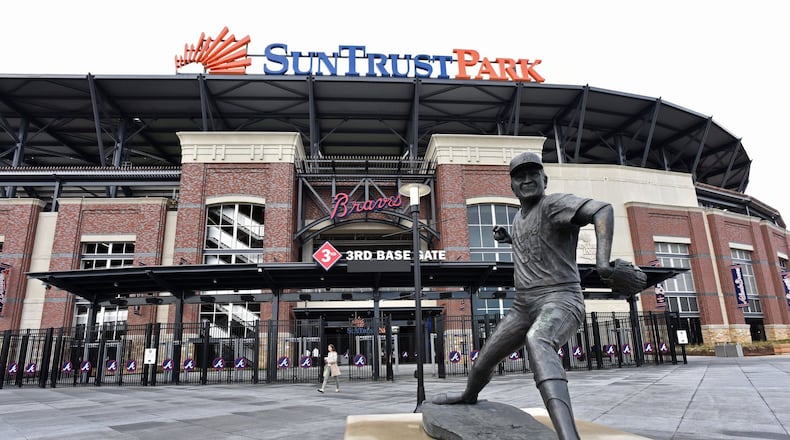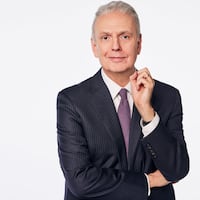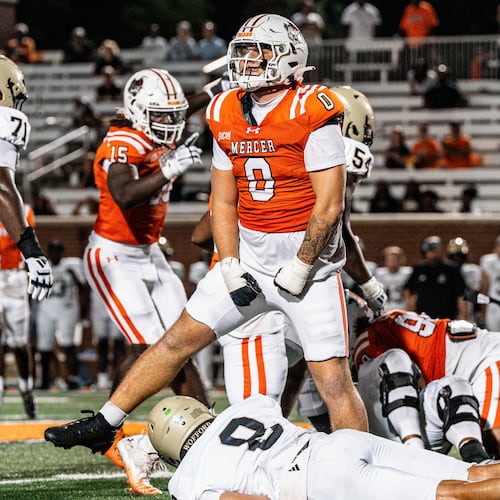Fair warning: This season will try our patience, and I’m not just talking about the time it will take to get to SunTrust Park. I’m talking about actual baseball. I’m talking about the 2017 Braves. They’ve become an in-between team, and those are the kind that frustrate us in a way that good teams (because they win) and lousy ones (because it’s clear they never will) do not.
These Braves figure to win enough games that we’ll want them to make moves so they can win more. That probably — nay, almost certainly — won’t happen. Such win-now moves come at the cost of not winning later. The Braves have said their rebuild is running ahead of schedule, but that’s not because they’ve stomped on the gas. It’s because other teams (the Padres and especially the Diamondbacks) did the gas-stomping. Both wound up in the ditch. There’s your object lesson.
The vision some of us ascribed to this season — good young team in spanking new ballpark! — was never part of the Braves’ loose timetable. (The reason it’s loose is because rebuilds have their own pace. Trying to make them go faster will only slow the process. I know this sounds Zen-like, but it is what it is.) The Braves’ concession to Year 1 in STP was to splurge a bit on three seasoned-if-not-ancient starting pitchers. Even so, the moves for Bartolo Colon, R.A. Dickey and Jaime Garcia were buttressed by pragmatics.
The Braves’ reset will hinge on young pitching. The greatest regret of this reset — well, beyond Hector Olivera — is that the organization believed Matt Wisler and Aaron Blair were ready for the majors. Wisler was for a while; then he wasn’t. Blair manifestly was not. Renting Colon/Dickey/Garcia buys time for the other young arms, and the outlay of $32.5 million for three veterans isn’t exorbitant when you consider there’s no obligation beyond this season. These three won’t be blocking anybody who’s younger and cheaper and, it is hoped, better. They’re keeping seats warm.
As mentioned earlier, some baseball analysts view the composition of the 2017 Braves as odd. Why is a rebuilding team stocking its rotation and its everyday lineup with nine players — counting the catching platoon of Tyler Flowers and Kurt Suzuki as separate entities — 30 or older? There’s another nod to their new environs. To throw nothing but kids into the majors would be to ensure that Cobb County gets handed a 100-game loser. Nobody wants that. Nobody associated with the Braves wants to emulate the torn-down-by-design Astros: From 2011 through 2013, they lost 106 games, then 107, then 111.
Difference is, the Astros weren’t christening a new stadium. If attendance and TV share cratered — and they did; in September 2013, an Astros game drew a Nielsen rating of 0.00 in the Houston market — that was a price the front office was willing to pay. As we speak, the Braves’ biggest lure is SunTrust Park, but that new-park smell wears off fast if the quality of play is, shall we say, odoriferous.
This season is designed as a bridge. This team was assembled not to win the National League East, but to win just enough to keep the customers from turning away in disgust. The Braves will never say this out loud, but the best-case scenario would be if they’re a bit below .500 at the All-Star break, which would mean they’d have won enough not to embarrass themselves but not so much as to preclude general manager John Coppolella from dealing Colon or Dickey or Garcia for more prospects.
Still, waging a holding action can be tricky. The Braves made no major trades over the winter. They bought players — the best of those buys was the Swiss Army knife Sean Rodriguez, who was injured in a car crash and might miss the season — while refusing to sacrifice a significant prospect. (Unless you count Mallex Smith, whose value slipped after the acquisitions of Matt Kemp and Rodriguez.) The good thing about renting an older guy is that you’re not making a long-term investment. The bad thing is that the older guy mightn’t have anything left.
Credit the Braves for knowing who and where they are. Their rebuild isn’t so far along that Chris Sale would have made them a surefire winner, but trading for Sale would surely have wrecked that rebuild. As much as we on the periphery might wish they’d Get On With It, Coppolella and John Hart are too smart to get ahead of themselves. The end is not yet in sight.
And that’s where we as an audience must be prepared to exercise restraint. SunTrust Park is ready. Ronald Acuna and Kolby Allard and Ian Anderson and Kevin Maitan are not. The Braves we’ll see in STP in 2017 won’t be the Braves we’ll remember decades from now. The process is in place. That process is working. But it, we must remind ourselves, still a process.
About the Author
Keep Reading
The Latest
Featured



